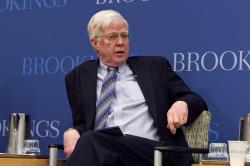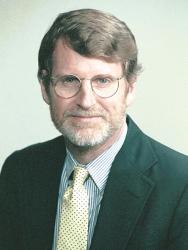The United States, along with most other industrial countries, is debating how to modify public retirement programs in response to population aging. The debate has identified three broad approaches to reform: Increasing contribution rates; reducing benefits; and pre-funding a larger fraction of future obligations. Opinions about these approaches differ because the options have differing distributional impacts, both on high- and low-wage workers within a cohort and across age cohorts. The debate over the first two policy options is dominated by distributional concerns. Boosting contribution rates will favor workers who are already retired or near retirement; reducing benefits hurts people who are retired or near retirement. The policy choice between the two options is viewed from the perspective of a zero-sum conflict in which the benefits or taxes of one generation or group of workers must be sacrificed in the interest of maintaining the incomes of another. The total amount of future resources available for consumption is assumed fixed, and the debate is over how to divide them between workers and retirees and between high- and low-wage workers.
From an economic perspective, the option of advance funding offers a different kind of choice. The pool of resources for future consumption cannot be assumed to remain constant. It can rise or fall depending on today?s choice of an advance funding policy. Current workers can fund a greater part of the cost of their own pensions by increasing their contributions into a retirement plan, whether the plan is public or private. If the contributions are saved and used to finance the accumulation of additional capital, the result will be an expansion of the resources available to future workers and retirees.
In this paper we examine the distributional consequences of three alternative approaches to pension reform within a model that takes account of the dynamic effects of the reforms on aggregate output, wages, and interest rates. This framework allows us to measure the feedback effects of advance funding on workers? earnings and pension benefits. These dynamic effects are sufficiently large so that they fundamentally change the conclusions we would draw based on a static analysis. Our analysis is performed by combining a neoclassical growth model with a microsimulation model. This combination permits us to measure the impact of alternative reforms on a representative set of individual workers. The microeconomic model is based on a small number of earnings patterns that reflect the diverse career wage profiles of recent American workers. The profiles allow us to calculate individual pension benefits, lifetime net incomes, and internal rates of return and thus to examine the distributional impact of reform.
We focus on three alternative reforms that would restore Social Security to solvency: (1) Future tax increases that maintain the Social Security system on a pay-as-you-go basis (i.e., each year?s income exactly covers the year?s expenses while maintaining a reserve equal to one year?s outgo); (2) Tax increases that maintain the system in actuarial balance over a 75-year horizon (a reform that requires a sizable immediate tax increase); and (3) Benefit reductions that maintain solvency on a pay-as-you-go basis combined with a new mandatory system of individual pension accounts that partially offset the cuts in Social Security benefits. We have designed the second and third reforms so that both require workers to contribute an additional 2.6 percentage points of taxable wages to the retirement system starting in 2000. Under the second reform, the extra contributions flow into the Social Security Trust Funds. Under the third reform, they flow into private retirement accounts in which 70 percent of accumulations are held as equities and 30 percent are held as government bonds.





